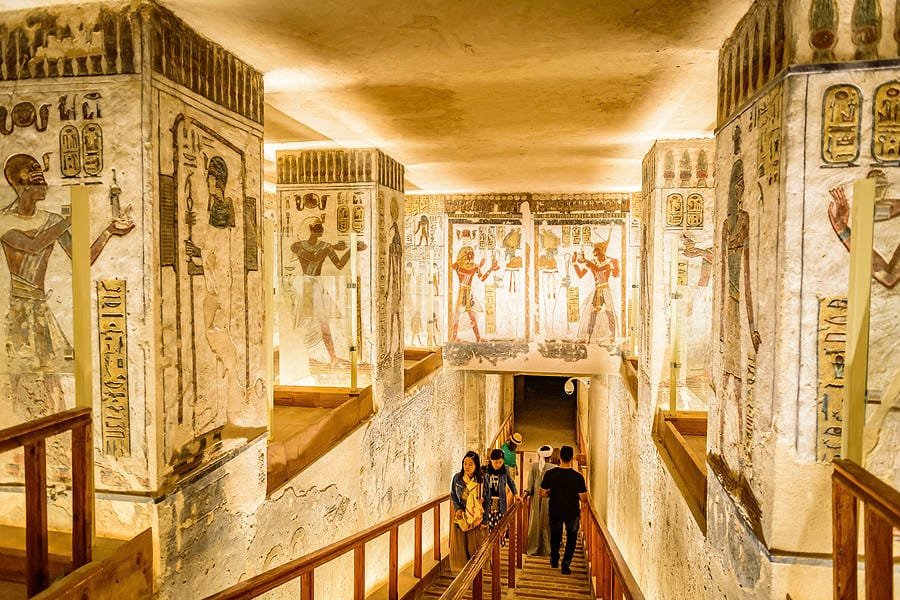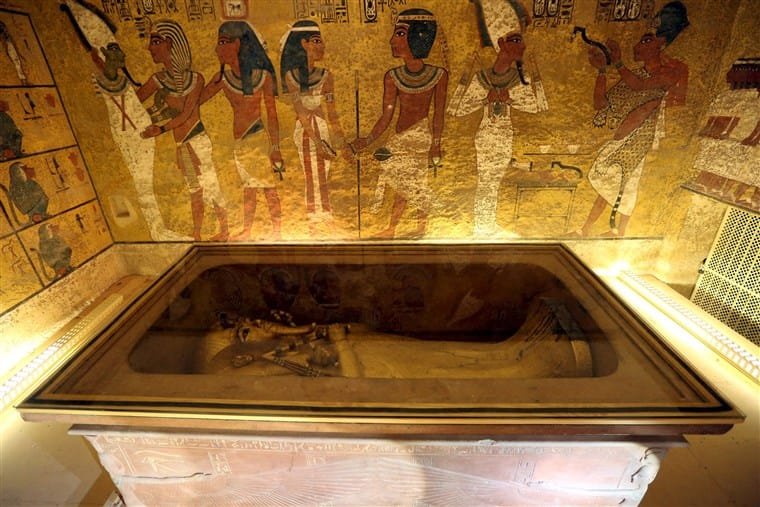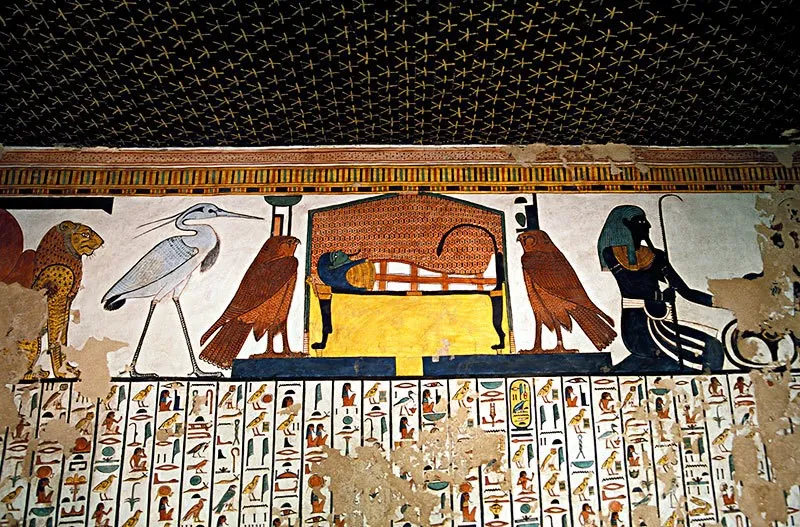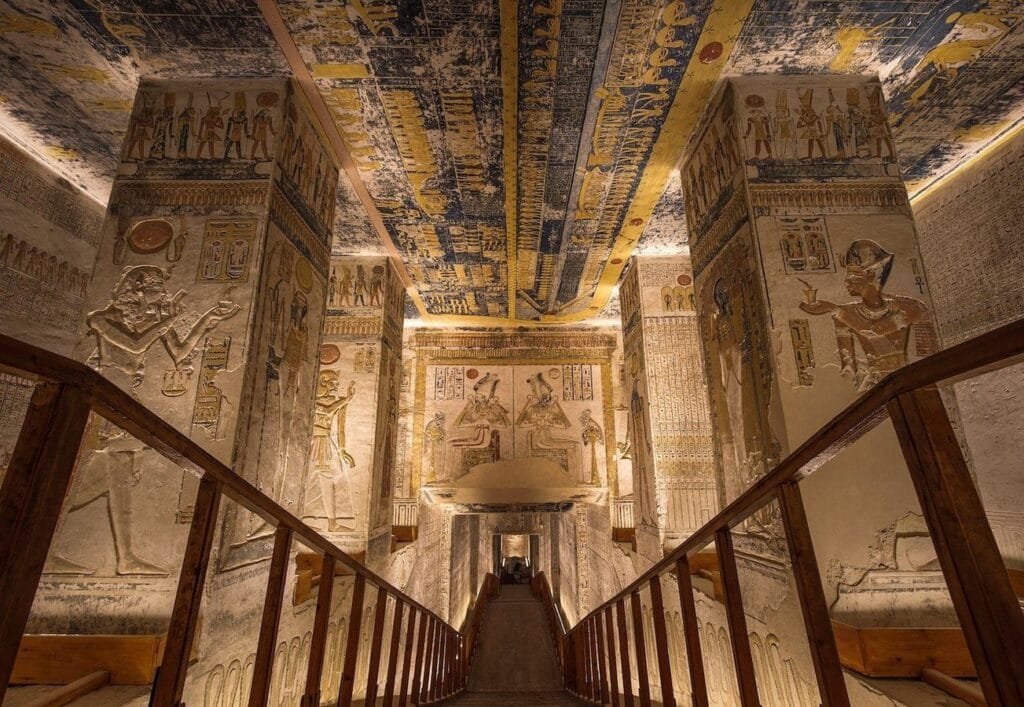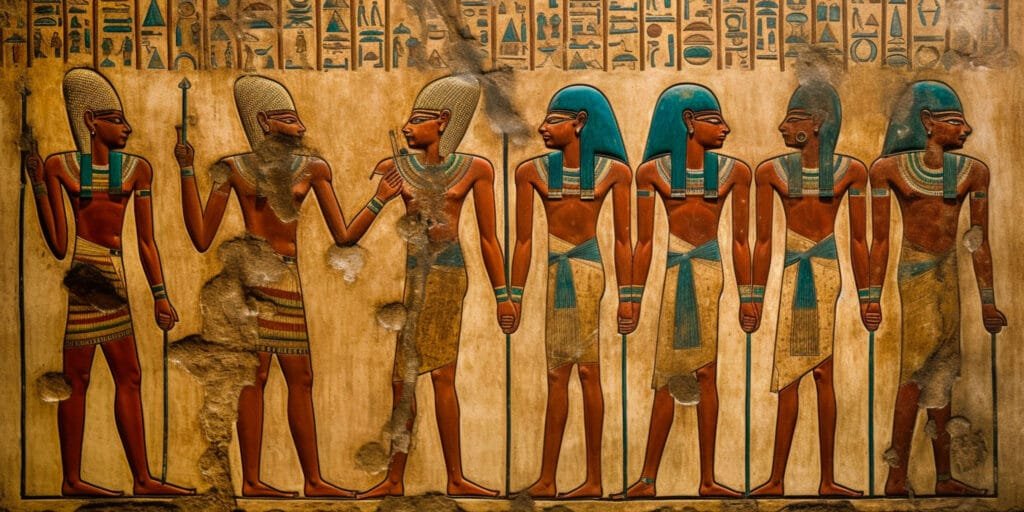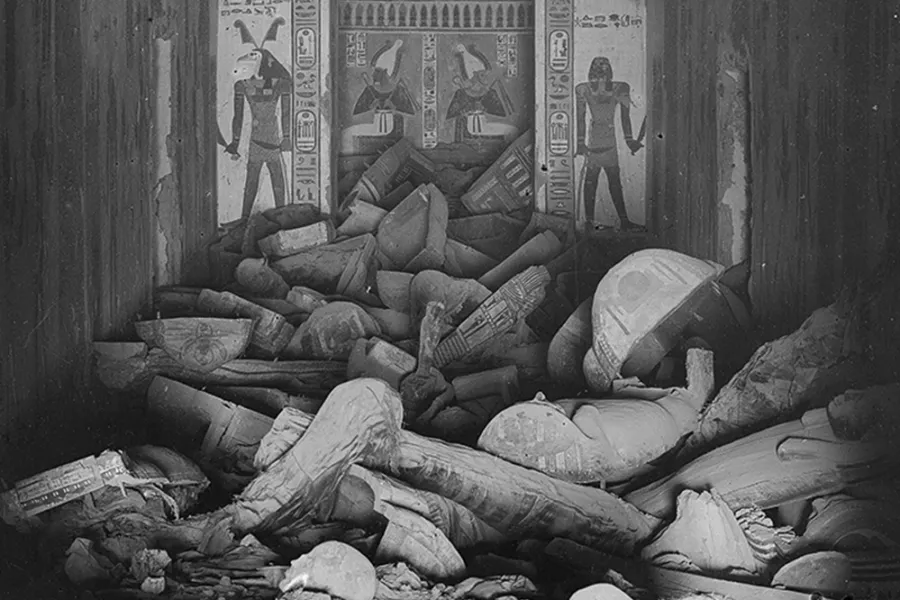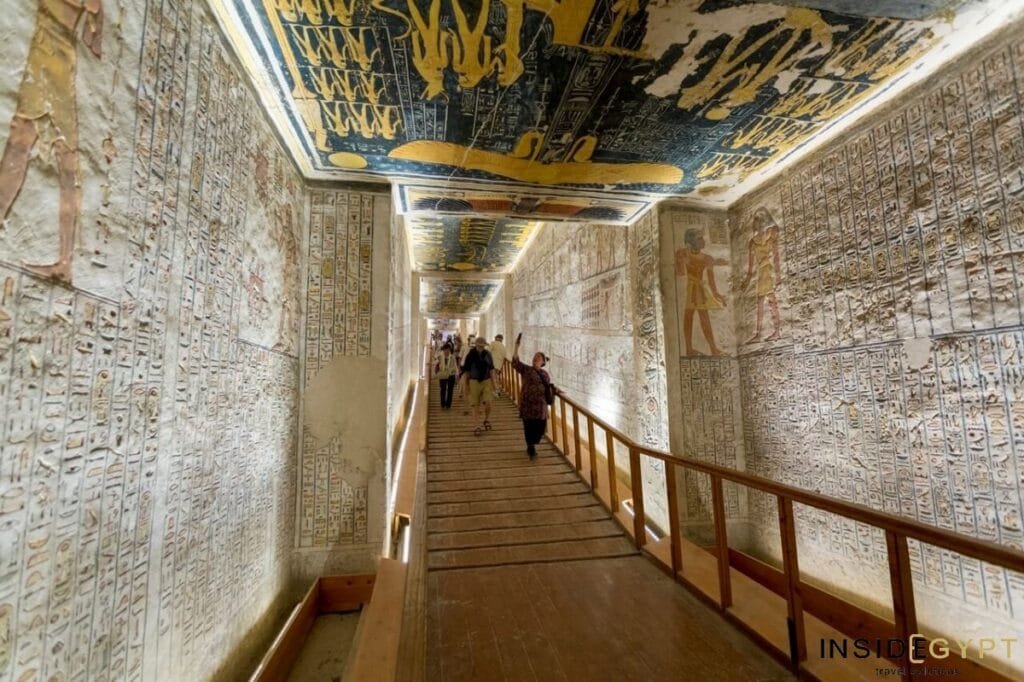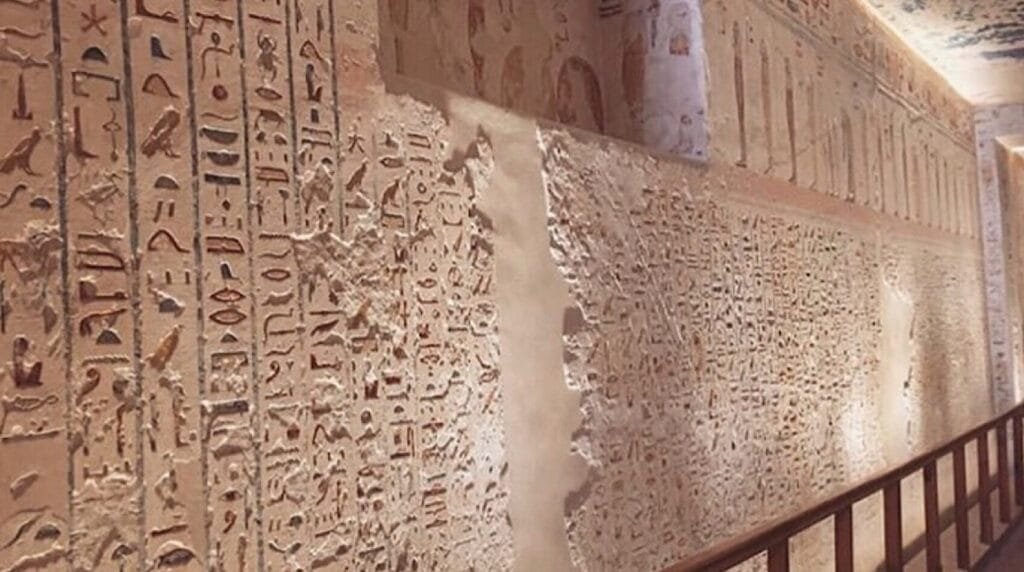The Valley of the Kings, located on the west bank of the Nile River near Luxor, is one of Egypt’s most significant and awe-inspiring archaeological sites. This ancient burial ground was the final resting place for many of Egypt’s most famous Pharaohs, queens, and elites, including Tutankhamun, Ramses the Great, and Seti I. The valley holds 63 royal tombs, which are famous for their intricate architecture, beautiful wall paintings, and complex layout. For visitors, it offers a fascinating glimpse into the beliefs, wealth, and art of the New Kingdom (1550–1070 BCE). Exploring the tombs provides insight into Egypt’s powerful rulers and their preparations for the afterlife, making it a must-visit site for anyone interested in Egyptology and ancient history.
- Egypt Tour Magic
- Egypt Tour Packages
- Excursions in Egypt
- Cairo Tours and Excursions
- Hurghada Tours and Excursions
- Soma Bay Tours and Excursions
- Makadi Bay Tours and Excursions
- Sahl Hasheesh Tours and Excursions
- El Gouna Tours and Excursions
- Marsa Alam Tours and Excursions
- Port Ghalib Tours and Excursions
- El Quseir Tours and Excursions
- Dendera and Abydos Day Tours
- Aswan Tours and Excursions
- Luxor Tours and Excursions
- Alexandria Tours and Excursions
- Sharm El Sheikh Tours and Excursions
- Top Rated Tours in 2025
- Optional Excursions in Egypt
- Private Transfer
- Blogs About egypt
- Ancient Egypt
- What You Need To know Before Your First Trip To Egypt
- Best Places to Visit in Egypt 2025
- Top Attractions in Red Sea Resorts 2025
- Top 10 Tourist Activities in Egypt
- Top 30 Activities You Can’t Miss in Egypt
- The Guide to Guided Tours in Egypt
- Egypt’s Ancient and Modern History
- The Nile River
- The Deserts of Egypt
- Historical Sites in Egypt
- Cairo
- Alexandria
- Luxor
- Aswan
- The Red Sea
- Dendera Temple
- El Fayoum Oasis
- Bahariya Oasis
- Siwa Oasis
- Al Alamein
- Marsa Matruh
- Ancient Egyptian gods
- famous Egyptian dishes
- UNESCO World Heritage sites
- About Us
- Why Egypt Tour Magic
- Egypt Tour Magic
- Egypt Tour Packages
- Excursions in Egypt
- Cairo Tours and Excursions
- Hurghada Tours and Excursions
- Soma Bay Tours and Excursions
- Makadi Bay Tours and Excursions
- Sahl Hasheesh Tours and Excursions
- El Gouna Tours and Excursions
- Marsa Alam Tours and Excursions
- Port Ghalib Tours and Excursions
- El Quseir Tours and Excursions
- Dendera and Abydos Day Tours
- Aswan Tours and Excursions
- Luxor Tours and Excursions
- Alexandria Tours and Excursions
- Sharm El Sheikh Tours and Excursions
- Top Rated Tours in 2025
- Optional Excursions in Egypt
- Private Transfer
- Blogs About egypt
- Ancient Egypt
- What You Need To know Before Your First Trip To Egypt
- Best Places to Visit in Egypt 2025
- Top Attractions in Red Sea Resorts 2025
- Top 10 Tourist Activities in Egypt
- Top 30 Activities You Can’t Miss in Egypt
- The Guide to Guided Tours in Egypt
- Egypt’s Ancient and Modern History
- The Nile River
- The Deserts of Egypt
- Historical Sites in Egypt
- Cairo
- Alexandria
- Luxor
- Aswan
- The Red Sea
- Dendera Temple
- El Fayoum Oasis
- Bahariya Oasis
- Siwa Oasis
- Al Alamein
- Marsa Matruh
- Ancient Egyptian gods
- famous Egyptian dishes
- UNESCO World Heritage sites
- About Us
- Why Egypt Tour Magic
Valley of the kings , Exploring the Tombs of Ancient Egypt’s Elite
1. A Royal Necropolis: The Valley’s Importance
The Valley of the Kings was selected as a royal burial site due to its location, which was well protected from tomb robbers and natural elements. It became the primary burial ground for Egypt’s Pharaohs, nobles, and elites during the New Kingdom period (1550–1070 BCE). The valley is strategically placed on the western side of the Nile River, symbolizing the journey to the afterlife, which was thought to be in the western sky. It was believed that the Pharaohs and their high-ranking officials would make the journey to the afterlife after death, aided by the gods. The tombs were carved into the rock and decorated with intricate paintings and hieroglyphs depicting scenes of the Pharaoh’s life, afterlife journey, and religious beliefs. Visiting the valley offers tourists a chance to witness the grandeur and sanctity with which these rulers were honored in death.
2. The Tomb of Tutankhamun: The Boy King’s Final Resting Place
Among the most famous tombs in the Valley of the Kings is that of Tutankhamun, the young Pharaoh who became famous not for his reign, but for the discovery of his nearly intact tomb in 1922 by British archaeologist Howard Carter. The tomb, designated KV62, was filled with treasures, including the famous golden death mask of Tutankhamun, chariots, jewelry, and furniture, offering unparalleled insights into the opulence and burial practices of ancient Egyptian royalty. Despite his short and largely unremarkable reign, Tutankhamun’s tomb is one of the most significant archaeological discoveries of the 20th century. For tourists, a visit to Tutankhamun’s tomb is a highlight of the Valley of the Kings, providing an intimate look at the wealth and grandeur with which Egyptian rulers were buried. The discovery of the tomb also shed light on Egypt's burial practices and their complex relationship with the afterlife.
3. Royal Tombs and Their Fascinating Wall Paintings
The tombs in the Valley of the Kings are not just burial places; they are masterpieces of ancient Egyptian art and religious beliefs. Each tomb was intricately designed and decorated with wall paintings and hieroglyphic inscriptions that illustrated the Pharaoh’s journey to the afterlife. These paintings depicted gods, such as Osiris, Ra, and Anubis, along with scenes from the Book of the Dead, which guided the soul of the deceased through the underworld. The tombs were designed to ensure the Pharaoh’s safe passage to the afterlife and to provide him with everything he would need, including food, treasures, and protection from evil spirits. Visiting the Valley offers a chance to see these stunning works of art up close and learn about the religious significance behind each scene. The tombs of Ramses II, Seti I, and Horemheb are particularly famous for their vivid and well-preserved wall paintings, attracting art lovers and history enthusiasts alike.
4. The Architecture of the Tombs: Engineering Marvels
The tombs of the Valley of the Kings are not only artistic treasures but also architectural marvels. Carved deep into the rock, these tombs were designed to be both monumental and secure. The complex passageways, corridors, and chambers were meticulously constructed to reflect the grandeur of the deceased ruler. Many tombs were equipped with multiple chambers for the body, offerings, and funerary goods. The entrance often leads to a long, sloping corridor, followed by a burial chamber decorated with vivid murals and inscriptions. The tomb of Seti I, for example, is known for its depth and complexity, with a stunning burial chamber adorned with intricate religious scenes. The engineering and design of these tombs reveal the ancient Egyptians’ advanced understanding of construction, symmetry, and layout. For tourists, the tombs provide a fascinating look into the technical prowess of ancient builders who created these structures over 3,000 years ago.
5. The Role of the Gods and the Afterlife
The ancient Egyptians believed in an intricate and detailed view of the afterlife, and the Valley of the Kings reflects this deep spiritual significance. The Pharaohs were buried with an array of objects to assist them in their journey to the afterlife, where they would be judged by the gods and face trials. The most important of these gods was Osiris, the god of the afterlife, and Anubis, the god of mummification. The walls of the tombs were covered in scenes that depicted the Pharaoh’s journey through the underworld, ensuring his rebirth and immortality. The tombs also featured texts from the Book of the Dead, which outlined the spells and rituals needed to guarantee a safe passage to the afterlife. These beliefs offer valuable insights into the religious and spiritual life of the ancient Egyptians, and for tourists, exploring these tombs brings them face-to-face with the gods and rituals that shaped ancient Egyptian culture.
6. Tomb Robberies and Preservation Efforts
The tombs in the Valley of the Kings were designed to be secure, but over the centuries, they fell victim to tomb robbers who looted the treasures intended for the afterlife. The tomb of Tutankhamun, for example, was largely untouched, but many other tombs were plundered in antiquity. Despite these challenges, efforts to preserve the tombs have been ongoing, with archaeologists and Egyptologists carefully studying and conserving the site. In recent decades, extensive restoration projects have been undertaken to protect the tombs from further deterioration caused by exposure to environmental elements, such as humidity and temperature fluctuations. For visitors, understanding the history of tomb robberies and preservation efforts adds an important layer of context when exploring the site. Modern conservation techniques continue to protect the delicate murals and structures, ensuring the Valley’s legacy endures for generations to come.
7. Touring the Valley of the Kings: A Rich Experience for Visitors
A visit to the Valley of the Kings is a journey back in time, offering tourists the chance to walk in the footsteps of Egypt’s most powerful and influential rulers. The valley is open to the public, and guided tours provide fascinating insights into the history of the tombs, their creators, and the rulers who were buried there. Among the most visited tombs are those of Ramses VI, Ramses IX, and the Tomb of Nefertari, which stands as a testament to the art and culture of Ancient Egypt. The tombs’ vivid wall paintings, intricate architecture, and mysterious aura draw visitors from around the world who seek to learn about Egypt’s fascinating past. Exploring the Valley is a unique opportunity to witness the grandeur and mystery of one of Egypt’s most sacred and historically significant sites.
8. The Legacy of the Valley of the Kings
The Valley of the Kings has played a pivotal role in shaping our understanding of Ancient Egypt’s royal and religious practices. It serves as a reminder of the immense wealth and power of the New Kingdom Pharaohs, and the lasting cultural and spiritual influence of the civilization. The tombs are not only archaeological treasures but also spiritual landmarks that reflect Egypt’s beliefs about death, immortality, and the afterlife. The site continues to provide invaluable information to historians and archaeologists, and each discovery brings us closer to understanding the lives and legacies of Egypt’s ancient rulers. For tourists, visiting the Valley of the Kings is more than just an exploration of tombs; it is an immersion into the ancient world that allows them to connect with the history, art, and culture of one of the world’s greatest civilizations.


